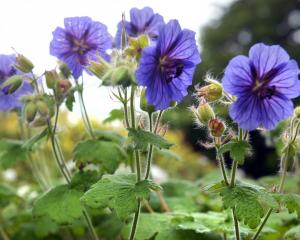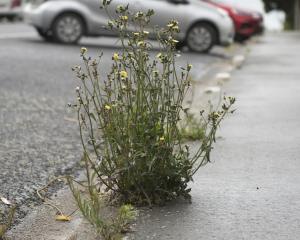Seven o'clock seems indecently early to be visiting a rose garden but it's worth the effort to be at the entrance to the Hunter Valley Gardens to be let in by one of the gardeners.
He has been at work since six, so my sleepy state gets little sympathy.
Despite its numerous tourism awards, I hadn't heard of the New South Wales property until a year ago but, having been told about it, it shot to the top of my ‘‘must visit'' list.
Designed by David Batty for Australian millionaires Bill and Imelda Roche, the complex has a dozen themed gardens, from Indian to Oriental, nursery rhyme to formal topiary styles, covering 25ha in total.
The first surprise is not the lushness but the amount of water, running from the large reservoir in front of the gardens to an artificial lake at the far end.
‘‘The property's been designed to catch all the water,'' horticultural manager Sean O'Brien says.
In all, there is catchment area of 7.5sq km and to date, Hunter Valley Gardens has not run short of water, despite the very hot northerly winds that sear the region in summer.
‘‘We had 49degC one New Year's Day,'' Mr O'Brien says when asked how hot it can get.
‘‘But we do get frosts. The worst since I've been here is minus 5degC.''
Bill Roche took a hands-on approach to the garden, whose creation involved moving 800,000cu m of soil from the former cattle paddocks and bringing in another 100,000cu m of topsoil. And if Mr Roche didn't like the way things were shaping up, contractors had to rebuild to capture his vision.
‘‘It's an amazing feat,'' Mr O'Brien says. ‘‘It shows incredible vision.''
The rose garden is the most-visited of the 12 themed areas at Hunter Valley Gardens, although the Storybook Garden is now hard on its heels.
In all, the gardens have 33,000 roses, 8000 in the corkscrew-shaped rose garden. There are 120 varieties, among them Imelda, named after Mrs Roche.
It looks like a softer yellow version of Friesia, a rose Mr O'Brien says struggles in this climate. Imelda adores it.
The centrepiece of the rose garden is a group of statues depicting Mrs Roche and her three eldest grandchildren.
The rose garden epitomises Bill Roche's vision of ‘‘sight, colour and fragrance''.
Elsewhere, fragrance tends to take a back seat, as the bold colours Mr Roche loves pull the visitor towards the hot pink Bougainvillea draping rocks by the 10m waterfall in the sunken garden.
Inspired by Canada's Buchardt Gardens, it's very quiet, as the waterfall is turned on just before the first visitors arrive at 9am.
The sunken garden is lovely but for form, the border garden gets my vote. It looks Italian to me but I'm wrong: this 0.5ha area is modelled on English parterre gardens. Surrounded by pleached hedges of Australian Hills fig (Ficus hillii), with immaculate box hedges (Buxus sempervirens) creating internal shapes, it is completed with elegant topiary, Indian water features and annuals in the beds.
I drift around some of the 8km of paths, through Oriental and Japanese features, Indian and Italian gardens, increasingly appreciating Mr O'Brien's comment that the gardens ‘‘give people ideas on styles of gardens''.
Two hours have sped by and it's almost opening time as I head for the Storybook Garden.
I didn't think this would be quite my thing but Humpty Dumpty, the Mad Hatter and other characters from famous nursery rhymes are simply entrancing.
There's a delightful array, screened from each other by hedges and trees, so the area seems bigger than it actually is.
Lost in a daydream, I almost follow the cow and jump over the moon, when Three Blind Mice starts playing, the speaker on the ground what I take to be a stone. The music, like the waterfall, starts just before the visitors arrive.
As the first three coachloads are pouring in, it seems a good time to get some breakfast at the gardens cafe. - In the Hunter Valley, Gillian Vine was the guest of Hunter Valley Wine Country Tourism and stayed at Tallawanta Lodge.











